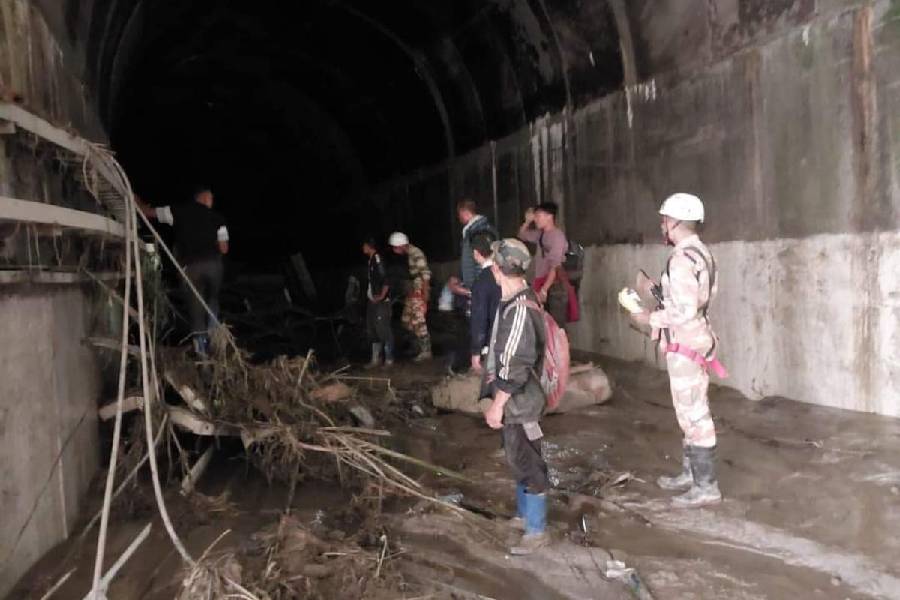Political rivals have sought to corner Sikkim Democratic Front (SDF) president Pawan Chamling over the destruction of the dam on the Teesta at Chungthang in the flash flood last week as it was commissioned during his term in the chief minister's office.
Chamling had been in power from 1994 to 2019 and the 1,200MW Sikkim Urja Teesta Stage III project at Chungthang in Mangan district was commissioned in 2017.
Gangtok BJP MLA Y.T. Lepcha filed a police complaint on Sunday evening against Chamling.
“As a matter of fact, the prime cause of all these devastation is traceable and we can pin-point it upon the greed of the ex-C.M. Sri P.K. Chamling who worked against the public opinion…,” the legislator wrote in the complaint.
Lepcha is the BJP's Sikkim vice-president as well but the party's state chief D.R. Thapa told this newspaper that the complaint had not been filed on behalf of the organisation.
“I filed the complaint as a victim. There should be no discrimination between the powerful people and the common people,” said Lepcha.
Chief minister P.S. Tamang (Golay) also blamed the Chamling-led government for the breach in the Teesta III dam.
“The South Lhonak lake did burst but major destruction downstream was also because the Teesta III dam gave away. That was because of sub-standard work. That was done by the previous government,” Golay said on Saturday, adding that an inquiry committee would be set up.
The SDF immediately countered Golay.
“The collapse of the Teesta III dam must be forensically investigated. There should also be an investigation on whether enough was done to prevent the glacier lake outburst flood (GLOF),” said senior SDF vice-president P.D. Rai, who added that their government had worked on lowering the water level of the South Lhonak lake.
The SDF wondered why the Teesta III dam had not been decommissioned when Golay had come to power in 2019 if he thought that the construction had been faulty.
Gyatso Lepcha, the general secretary of the Affected Citizens of Teesta (ACT), on Monday said the state government was preparing the ground to set up the 520MW Teesta stage IV hydel project and had started the process to acquire land for the purpose just a few days before the tragedy struck on the intervening night of October 3 and 4.
ACT members had sat on a 915-day dharna from June 22, 2007, to September 27, 2009, against hydel projects in Sikkim. Many believe four hydel projects were scrapped in the Teesta basin because of the campaign by the ACT.
“The Teesta stage IV hydel project must also be scrapped as all previous studies and clearance for the project are irrelevant as the topography has changed following the recent catastrophe,” said Gyatso.
The ACT said its campaign was to make people understand their region and its challenges.
Told about the political blame game that had started in Sikkim, Gyatso said the “dirty hydro politics” would always come into play and it was “no surprise given the amount of money involved in these projects”.
“Make no mistake; politicians will no longer be able to control the narratives on dams in Sikkim from now onwards. The people will decide,” said Gyatso.
Asked if he would oppose the Teesta stage IV project, the Gangtok MLA said: “It all depends on what the people of the area want. If they don’t want the dam, it should not be built. If they want, it might be built.”










